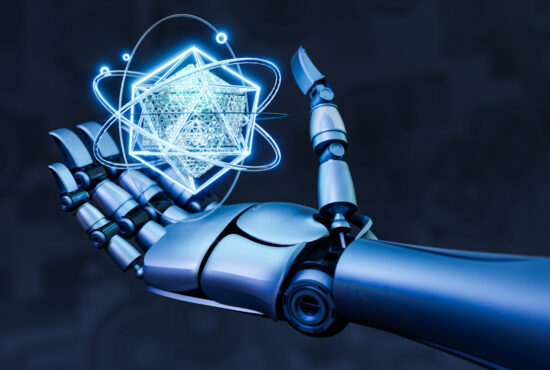Technology and its footprints have been on the rise now more than ever. When it comes to artificial intelligence and machine learning in the renewable energy sector, more action is urgently needed to avoid catastrophic long-term climate impacts, based on the new IPCC report. Because fossil fuels still provide more than 80% of global energy, the energy sector must be at the forefront of this effort.
Fortunately, the energy system is already changing and renewable energy generation is rapidly increasing, thanks to falling costs and increased investor interest. The scale and cost of decarbonizing the global energy system, on the other hand, remain enormous, and time is running out.
To date, despite artificial intelligence is a modern approach, the majority of the energy sector’s transition efforts have been concentrated on hardware new low-carbon infrastructure to replace legacy carbon-intensive systems. Another crucial tool for the transition has received relatively little attention and investment in next-generation digital technologies, particularly artificial intelligence (AI). These powerful technologies can be adopted at larger scales more quickly than new hardware solutions, and they could become a key enabler for the energy transition.
While it is difficult to predict when it is widely acknowledged that fossil fuels will not be sufficient to meet our energy needs in the future. Renewable energy is emerging as the most reliable option for our future, but despite significant progress in some areas, there are still many obstacles to overcome. Solar and wind power are two of the most popular renewable energy sources, but they are weather-dependent and unpredictable, and we still need to smooth the energy flow from generation to consumption. Storage technology is improving, but it is still a long way from where it needs to be. Renewable energy generation will occasionally fall short of demand, so it cannot be a reliable source of baseload for consumption. The baseload continues to shift to fossil fuel-based generation, defeating the original goal of moving to renewables.
Grid operators, developers, and consumers are harnessing artificial intelligence (AI) as we move into the Fourth Industrial Revolution, paving the way for a smooth transition to greater use of renewables. The ability of AI to provide better prediction capabilities enables improved demand forecasting and asset management, while its automation capability drives operational excellence, resulting in competitive advantage and cost savings for stakeholders. As an example, consider Australia. Solar energy is expected to be present on 30% of the country’s residential, commercial, and industrial buildings by 2030, and 60% by 2050.
1. Artificial Intelligence (AI) is assisting energy companies in detecting faults before they result in energy failures.
Failure of equipment is a common and costly concern in the global energy sector, with potentially disastrous consequences. By analysing data from sensors used to monitor equipment and detect failures ahead of disasters, AI-powered tools can help companies create ideal maintenance schedules. In the end, these advancements save businesses millions of dollars while improving energy production and consumption efficiency, and reliability.
Through image analysis, companies like ABB use AI to detect faults such as cracks in pipelines and machinery. The company cites a pilot project with one of the world’s largest hydroelectric utilities as an example. Research suggests that after implementing ABB’s platform, the company saw a 10% reduction in routine maintenance and a 2% increase in output, resulting in cost savings of millions of dollars, according to the company.
2. The transition to low-carbon energy systems :
Distributed power generation, distributed storage, and advanced demand-response capabilities are all exploding, and they need to be orchestrated and integrated through more networked, transactional power grids.
The energy system and energy-intensive industries face enormous strategic and operational challenges in navigating these trends. AI can help energy-system stakeholders identify patterns and insights in data, learn from experience and improve system performance over time, and predict and model possible outcomes of complex, multivariate situations by creating an intelligent coordination layer across the generation, transmission, and use of energy.
3. AI Is Helping Consumers Choose Their Best-Fit Energy Providers
Consumers in deregulated energy markets, such as the United States, can choose their energy providers. Lumator, a tool developed by Carnegie Mellon University, analyses customer preferences and consumption data and compares it to available energy provider offers, including limited-time promotional rates. Lumator allows consumers to find energy companies that provide the best deal on the energy sources they use the most. Lumator can switch energy plans automatically as better deals become available over time as it “learns” more about customers.
In addition to cost savings, tools like Lumator can help increase the use of renewable energy by analysing consumer preferences for renewable energy sources and reporting demand to energy producers, who can adjust supply accordingly.
Conclusion
Artificial intelligence and machine learning in the renewable energy sector have far more potential to speed up the global energy transition, but this potential will only be realized if AI innovation, adoption, and collaboration are increased across the industry. However, AI is not a panacea, and no technological advancement can replace aggressive political and corporate commitments to reduce emissions. We can’t afford to leave any tools in the toolbox, given the urgency, scale, and complexity of the global energy transition. When used correctly, AI can help speed up the energy transition while also increasing access to energy services, encouraging innovation, and ensuring a safe, reliable, and affordable clean energy system. It is now up to industry players and policymakers to lay the groundwork for this AI-enabled energy future, as well as to create a trustworthy and collaborative ecosystem around AI in the energy transition.
